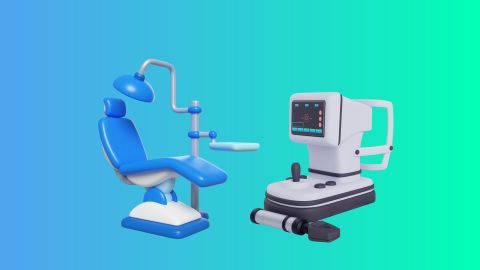What are orthopedic instruments?
Orthopedic instruments are special medical equipments made for diagnosing, treating, and managing musculoskeletal conditions. These instruments play a crucial role in orthopedic surgeries, assisting surgeons in procedures involving bones, joints, ligaments, tendons, and muscles. They include tools for cutting, drilling, stabilizing fractures, and ensuring precise alignment of bones and implants. Made from high-grade stainless steel or titanium, orthopedic instruments are durable, corrosion-resistant, and capable of withstanding repeated sterilization. Their use enhances surgical precision, improves patient outcomes, and streamlines orthopedic procedures, making them essential in both general and complex orthopedic treatments.For healthcare professionals looking to upgrade their medical equipment, financing solutions are available to ease the financial burden.
Uses of orthopedic instruments
Orthopedic instruments serve various purposes in surgical settings:- Bone Cutting: Instruments like bone saws are used to cut bones during surgery.
- Drilling: Drills and reamers create holes for screws and implants.
- Tissue Handling: Forceps and clamps hold tissues and bones securely.
- Exposure: Retractors hold back tissues to expose the surgical site.
- Stabilization: Implants such as screws, plates, and rods stabilize bones.
Types of orthopedic instruments
There are various types of orthopedic instruments, each designed for specific functions:- Bone Saws: Used for cutting bones during surgery.
- Drills and Reamers: Create holes for screws and implants.
- Forceps and Clamps: Hold tissues and bones securely.
- Retractors: Expose the surgical site by holding back tissues.
- Implants: Screws, plates, and rods used to stabilize bones.
Benefits of orthopedic instruments
Utilizing specialised orthopedic instruments offers several advantages:- Enhanced Precision: Allows for accurate surgical procedures and better alignment.
- Improved Patient Outcomes: Reduces complications and promotes quicker recovery.
- Durability: High-quality instruments withstand repeated sterilization and use.
- Safety: Minimizes tissue damage and surgical errors.
- Efficiency: Streamlines surgical procedures, saving time and effort.
Price range of orthopedic instruments in india
The cost of orthopedic instruments in India varies based on type and quality. Here are some examples:- Bone Nibbler: Rs. 734
- T-Handle with Chuck and Key: Rs. 1,799
- Bone Holding Forceps: Rs. 1,999
- Plaster Spreader: Rs. 2,179
- DHS and DCS Instruments Set: Rs. 17,499
How to choose an orthopedic instrument
Selecting the right orthopedic instruments is crucial for successful surgical outcomes. Consider the following factors:- Quality and Durability: Ensure instruments are made from high-grade materials.
- Compatibility: Check that instruments are compatible with other surgical tools and implants.
- Ergonomics: Choose instruments that are comfortable and easy to handle.
- Sterilization: Ensure instruments can withstand repeated sterilization.
- Manufacturer Reputation: Opt for reputable brands known for high-quality surgical instruments.




